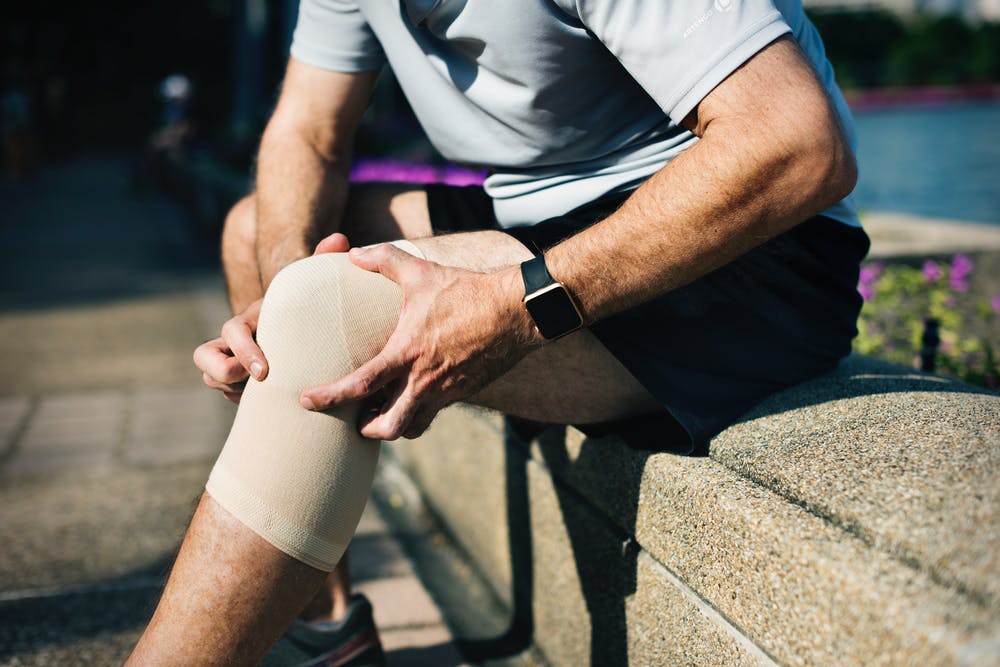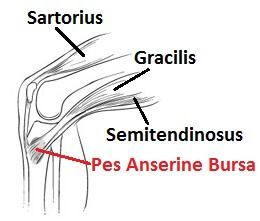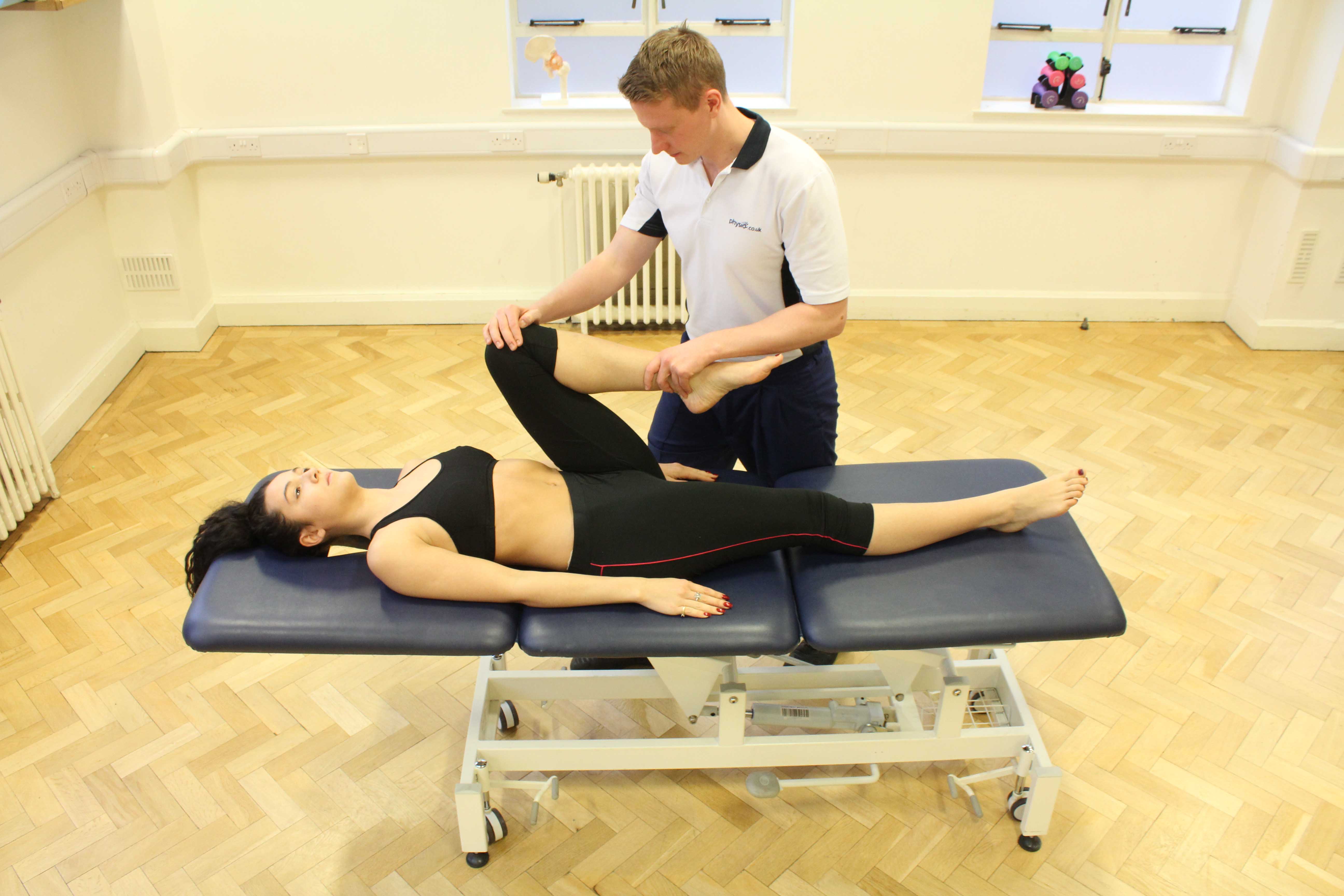nalco group
bone, muscle & joint pain physio
BOOK NOW / WHATSAPP ABOUT YOUR PAIN OR INJURY
- NOVENA 10 Sinaran Drive, Novena Medical Center #10-09, Singapore 307506
- TAMPINES 9 Tampines Grande #01-20 Singapore 528735
- SERANGOON 265 Serangoon Central Drive #04-269 Singapore 550265
Home > Blog > Physiotherapy > Conditions > Knee Pain > Bursitis > Pes Anserine Bursitis Physiotherapy
Pes Anserine Bursitis Physiotherapy

Pes anserine bursitis refers to a painful knee condition that produces pain on the inside of the knee and lower leg and it typically happen most commonly in
- young people involved in sports (eg, running or swimming the breaststroke)
- middle-aged women who are overweight and
- people aged 50 to 80 years who have osteoarthritis of the knee
Up to 75% of people who have osteoarthritis of the knee have symptoms of pes anserine bursitis.
The condition is also commonly associated with type 2 diabetes; 24% to 34% of patients with type 2 diabetes who report knee pain are found to have pes anserine bursitis.
However, that being said, in some cases no direct cause can be identified.
Our senior physiotherapists treat patients with pes anserine bursitis to
- reduce pain
- reduce swelling
- reduce stiffness
- reduce weakness
as well as identify and treat the underlying cause of the condition.
What is Pes Anserine Bursitis?
The pes anserine bursa is a small, fluid-filled sac located 2 to 3 inches below the knee joint on the inside of the lower leg.
It is located below 3 tendons that attach to muscles of the thigh, and prevents the tendons from rubbing on the shinbone (tibia).
The term “bursitis” describes a condition where the bursa has become irritated and inflamed.
This condition is usually painful and associated with some swelling in the affected area. Certain positions, motions, or disease processes can cause increased friction or stress on the bursa, leading to the development of bursitis.

Pes anserine bursitis can be caused by:
- Repetitive activities, like squatting, stair climbing, and other work or household activities that are often repeated
- Incorrect sports training techniques, such as a lack of stretching, sudden increases in run distances, or too much uphill running
- Obesity
- Osteoarthritis of the knee
- Valgus positioning of the knee (ie, a “knock-knee” position where the knees angle inward)
- Turning the leg sharply with the foot planted on the ground
- Injury, such as a direct hit to the leg
- Tight hamstring (back of the thigh) muscles
- A tear in the cartilage of the knee
- Flat feet
How Does it Feel?
With pes anserine bursitis, you may experience:
- Pain and swelling on the inside of the lower leg, 2 to 3 inches below the knee joint; this pain may also extend to the front of the knee and down the lower leg
- Pain when touching the inside of the lower leg, 2 to 3 inches below the knee joint
- Pain when bending or straightening the knee
- Pain or difficulty walking, sitting down, rising from a chair, or climbing stairs
How Is It Diagnosed?
Our senior physiotherapist will conduct a thorough examination that includes taking your health history as well as asking you detailed questions about your injury, such as:
- How and when did you notice the pain?
- Did you feel pain or hear a "pop" when you injured your leg?
- Did you turn your leg with your foot planted on the ground?
- Did you change direction quickly while running?
- Did you receive a direct hit to the leg while your foot was planted on the ground?
- Did you see swelling around the knee in the first 2 to 3 hours following the injury?
- Does your knee feel like it is buckling or “giving way” when you try to use it?
We also will perform special tests to help determine the likelihood that you have pes anserine bursitis. We may:
- Gently press on the inner side of your knee to see if it is painful to the touch
- Assess the range of motion you have at the knee and hip, as well as the strength of some of the muscles at these joints
- Observe how you are walking, squatting, and performing other functional and sports-specific tasks as appropriate
To provide a definitive diagnosis, we may collaborate with an orthopedic physician or other health care provider, who may order further tests, such as an x-ray or MRI, to confirm the diagnosis and to rule out other damage to the knee.
how our senior physiotherapists can help you
We will work with you to design a specific treatment program that will speed your recovery, including exercises and treatments that you can do at home.
Physical therapy will help you return to your normal lifestyle and activities.
The First 24 to 48 Hours
If you see our senior physical therapist within 24 to 48 hours of your injury, we may advise you to:
- Rest the area by avoiding walking or any activity that causes pain.
- Apply cold therapy to the area for 15 to 20 minutes every 2 hours.
- Consult with a physician for further services, such as medication or diagnostic tests.
Individualized Treatment
Depending on your condition and goals, your individualized rehabilitation plan may include treatments to:
Reduce pain and swelling
We may use different types of treatments to control and reduce your pain and decrease swelling, including
- cold therapy
- heat therapy
- ultrasound therapy
- electrical stimulation
- taping
- stretching exercises
- manual therapy
- dry needling
- deep tissue release
- radio-frequency Indiba physiotherapy

We will choose specific activities and treatments to help restore normal movement in the knee and leg.
These might begin with "passive" motions that we will do for you to gently move your leg and knee joint, and then progress to active exercises that you do yourself.
Improve flexibility.
Pes anserine bursitis is often related to tight hamstring (back of the thigh) muscles. We will determine if your hamstring muscles or any other leg muscles are tight, and teach you how to stretch them.
Improve strength
Certain exercises will aid healing at each stage of recovery. We will choose and teach you the correct exercises and equipment to steadily restore your muscle strength and power.
These may include using
- cuff weights
- stretch bands
- weight-lifting equipment and
- cardio-exercise equipment, such as treadmills or stationary bicycles
Improve balance
Regaining your sense of balance is important after an injury. We may teach you exercises to improve your balance skills.
Speed recovery time
We're trained and experienced in choosing the best treatments and exercises to help you heal, return to a normal lifestyle, and reach your goals faster than you are likely to do on your own.
Return to activities
Initially, we may recommend that you reduce or eliminate activities that aggravate your condition for a period of time.
We will discuss your goals with you and set up a treatment program to help you meet them in the safest, fastest, and most effective way possible.
You may learn specific exercises, work retraining activities, and sport-specific techniques and drills to help you achieve your own unique goals.
Other Treatment Options
Studies have shown that some patients who do not respond to conservative treatment, such as knee bursitis physical therapy, may benefit from medical therapy.
In that case, our senior physiotherapists may recommend that you discuss other treatment options with your physician, including corrective knee surgery.
Although surgery is rarely prescribed for pes anserine bursitis, it sometimes is needed. If surgery is required for your condition, you will follow a post-surgery physiotherapy recovery program over several weeks guided by our senior physiotherapists.
We will help you
- minimize pain
- regain motion and
strength and
- return to normal activities in the safest and speediest manner possible
